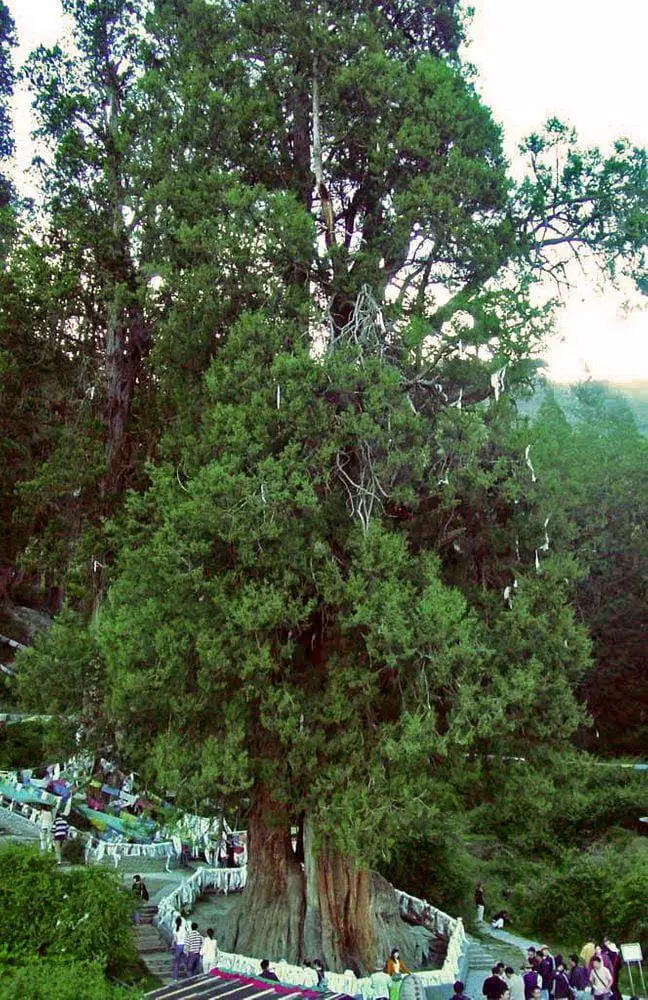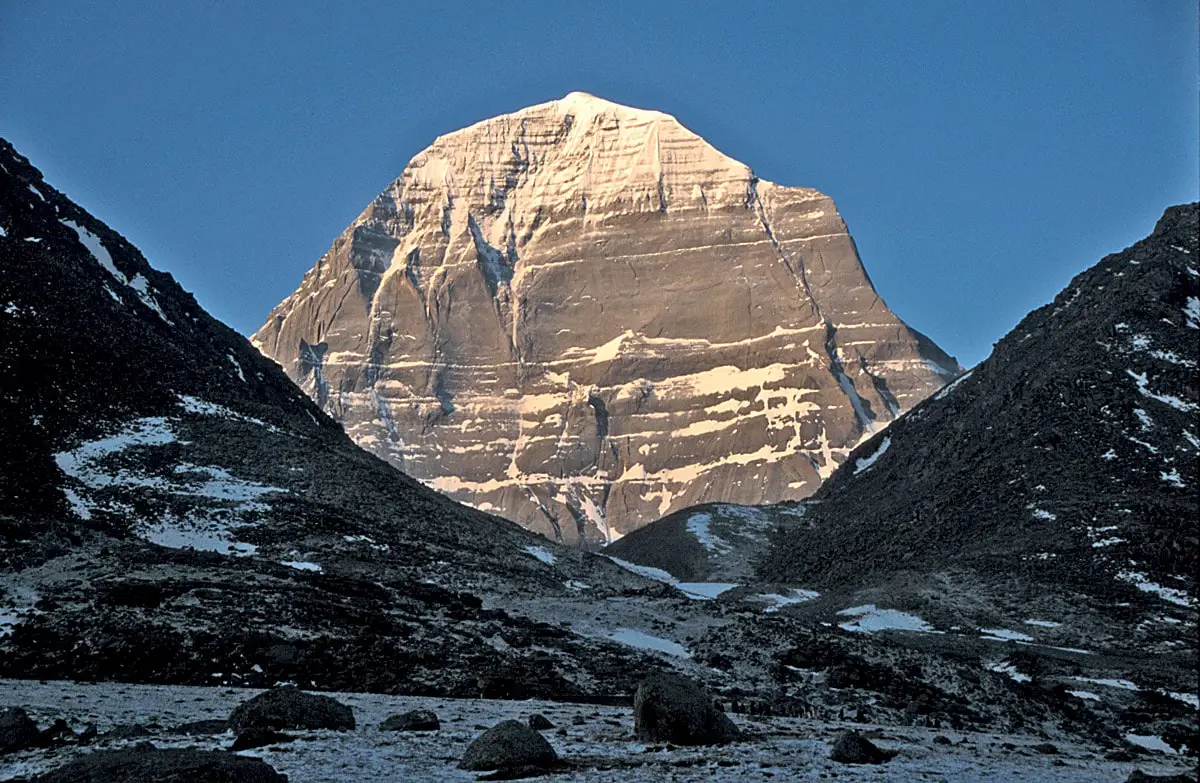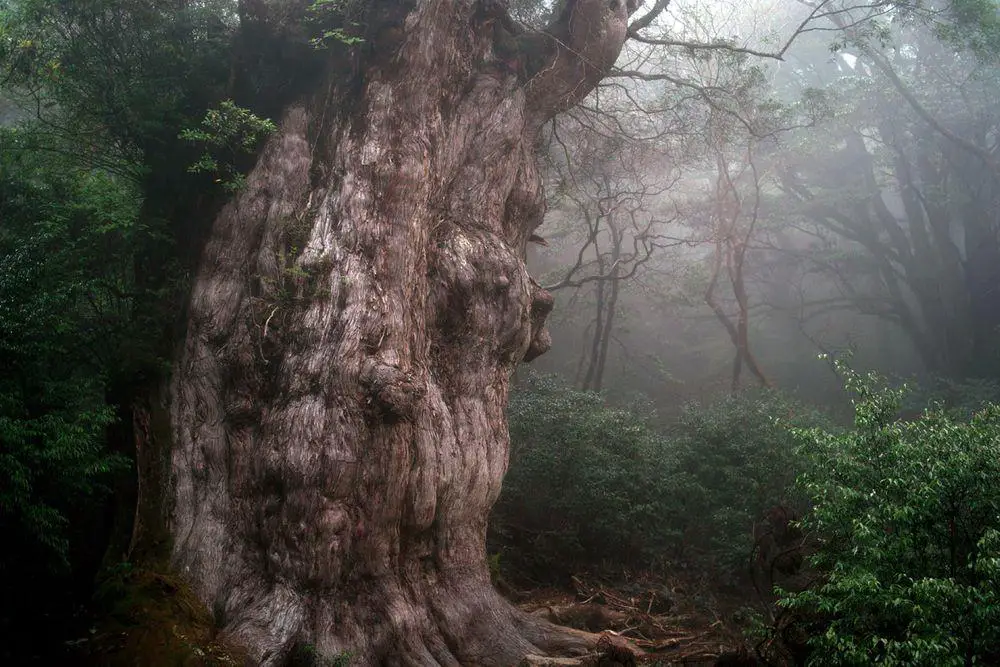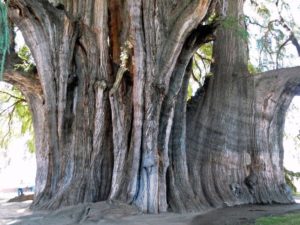Wonder
Baji Cypress (King Cypress)

 In short
In short
The Baji Cypress (King Cypress) has a trunk circumference of some 18.2 m and is approximately 50 m tall. According to legends this tree has seen the birth of one of world’s oldest religions – Bön.
 40.5%
40.5%
GPS coordinates
Location, address
Alternate names
Species
Diameter
Height
Map of the site
If you see this after your page is loaded completely, leafletJS files are missing.
 In detail
In detail
Cupressus gigantea
Baji Cypress is located in a grove of similar giant trees, all belonging to a very rare species – Tsangpo River cypress, Cupressus gigantea.
This magnificent tree species was described scientifically only in 1975. These cypresses grow only in the deep valley of Tsangpo River and its tributaries Nyang and Nize at 3,000 – 3,400 m height, along some 200 km long section of Tsangpo river.
Tsangpo River cypresses are becoming increasingly rare and are endangered. These magnificent trees are the tallest cypresses in the world, often more than 50 m tall.
Sacred Bön place
According to legends King Cypress is linked to a legendary person – Tonpa Shenrab Miwoche. This man lived long ago, before Gautama Buddha (e.g. before the 5th century BC) and founded the Bön religion. This religion is practiced up to this day and is seen as a relict, more ancient Tibetan tradition, an echo of the unexplored past of this unusual country.
King Cypress was the "life tree" of Miwoche, this tree has similar age to the ancient Bön religion, which predates Buddhism, Christianity, Islam.
Nature Reserve
Thanks to the legendary status King Cypress and trees around it have been preserved up to this day. The area of the grove is approximately 8 ha, but the Baji Giant Cypress Nature Reserve protects a larger area – more than 6,000 ha, with several more (less impressive) groves of cypresses.
Many ancient cypresses have a similar size to Baji Cypress, but Baji cypress is somewhat larger. The crown projection of this tree is 668 m², estimated age – some 2,600 years.
There is a possibility that some other cypress is even larger than Baji Cypress.
References
- Cupressys gigantea, The Gymnosperm Database. Accessed in the 2nd May 2013
Baji Cypress is included in the following article:
 Linked articles
Linked articles

Wonders of Tibet
Few countries in the world are as shrouded in myths and legends as Tibet is. This is a land with mountainous (the highest mountains in the world!), rugged and harsh terrain – and lots of unspoiled nature. All this scenery is dotted with thousands of historical landmarks – megaliths, cliff art, abandoned and existing towns and cities, thousands of rock-cut chambers and passages, and monasteries.

Trees
The category includes some of the most impressive and interesting separate trees in the world. The total number of tree species in the world still is a wild guess – maybe 10,000 and maybe 100,000 but most likely somewhere in between. Every month there are reported new tree species from the whole world, including Western Europe.

Wonders of Asia
Any other continent (and part of the world) seems small if compared to Asia. This refers also to natural and man-made heritage: in Asia are not just thousands of great landmarks, there are found landmarks created by thousands of diverse cultures from ancient Phoenicians to the mysterious small people in the Philippines and eastern islands of Indonesia.
 Recommended books
Recommended books
Giant Trees of Western America and the World
As a child growing up in the Fraser Valley, Al Carder was awed by the ancient Douglas fir forest and spent hours staring up at trees that commonly stood over 300 feet high. Sixty years later, after retiring from his career as a plant biologist, he set out to find the trees that had transfixed him in his youth. Discovering many of them felled by storms or loggers, he determined to document those that were left before they could vanish from our memories as well as from our landscapes.
Forest Giants of the World: Past and Present
Ever since the forest primeval, men and women have walked among the trees and admired their beauty, and wondered at their size. How big are these magnificent things, anyway? We moderns are wont to measure, categorize, and document, and so a book like this is born which is worldwide in scope and not only embraces space but also time. As the author, Al Carder shows us in his study of forest giants the past is as important as the present.



